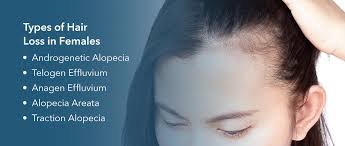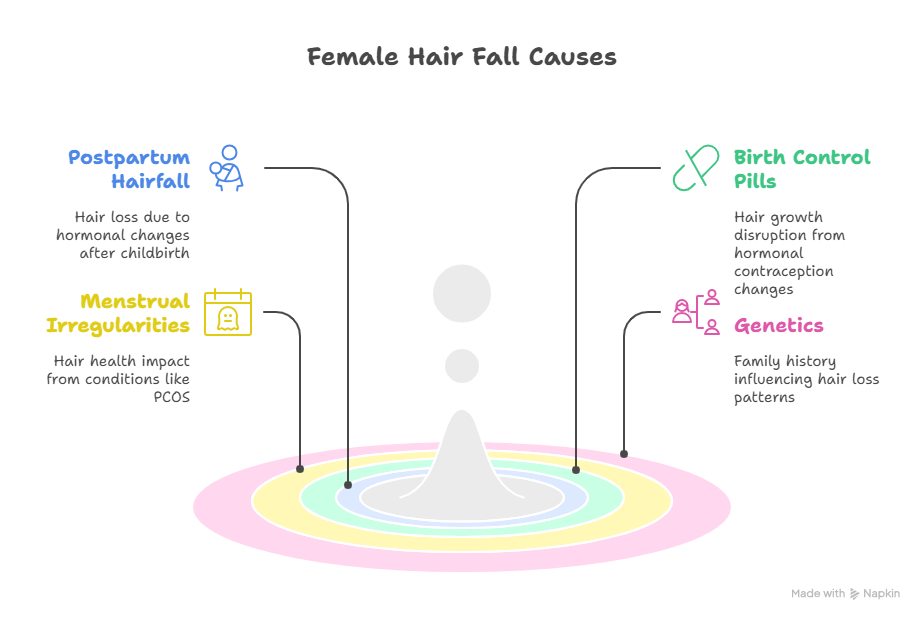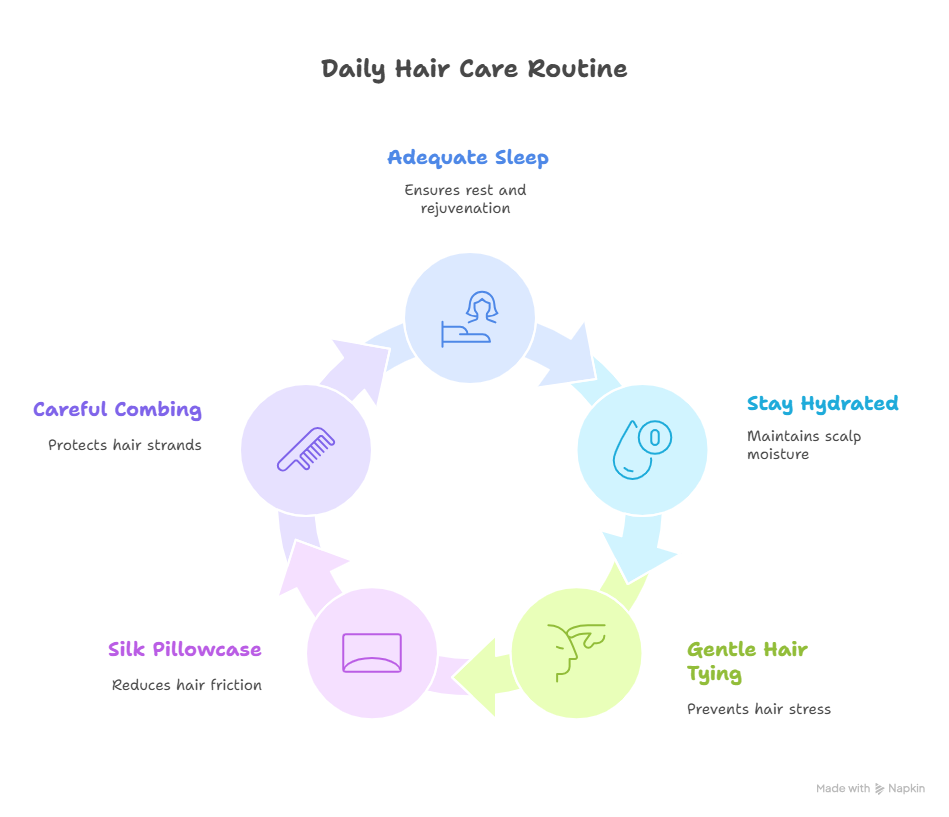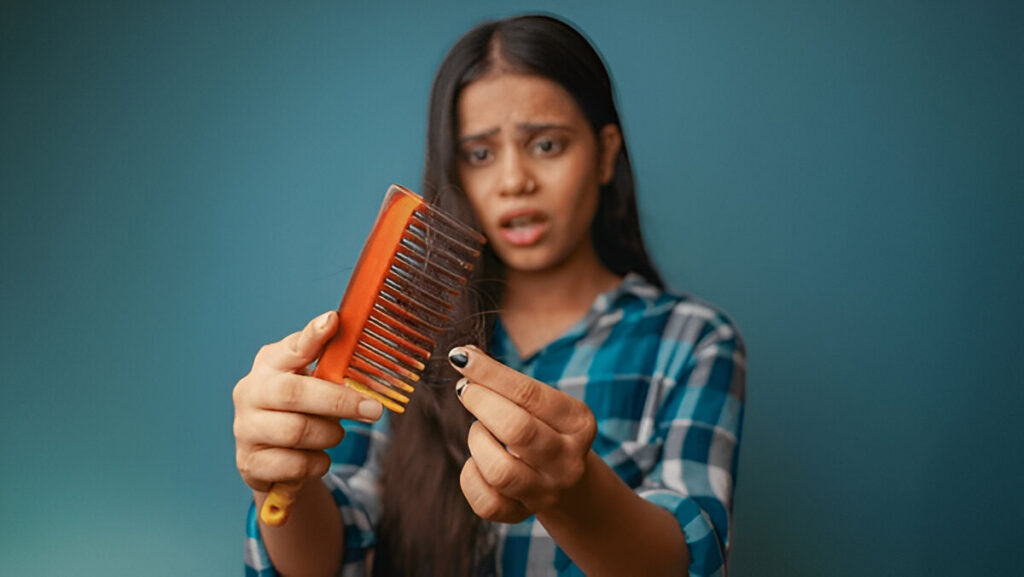 Understanding Hairfall: Why It Happens and How You Can Fix It
Understanding Hairfall: Why It Happens and How You Can Fix It
Hairfall is more than just a cosmetic issue—it can deeply affect your self-confidence and emotional well-being.
Whether you’re noticing hair strands on your pillow or an increasing number of them in the shower drain, it’s time to look deeper into what’s triggering the problem.
In this blog on hairfall, we’ll discuss the most common causes of hairfall, especially in women, and guide you through remedies and professional tips to tackle it effectively.
Is Hairfall Normal? When Should You Be Concerned?
Losing 50 to 100 hair strands daily is considered normal. But if you’re noticing visible thinning, bald patches, or an increase in hair on your brush and floor, you might be facing a hairfall problem that needs attention.
What Are the Common Causes of Hairfall?

Understanding the reasons for hairfall is the first step to resolving it. Let’s look at the top causes:
 1. Hormonal Changes
1. Hormonal Changes
One of the most common hairfall reasons in females is hormonal imbalance. This can occur due to:
- Pregnancy
- Menopause
- Polycystic Ovary Syndrome (PCOS)
- Thyroid imbalances
These conditions disturb the normal growth cycle of your hair, causing excessive shedding.
 2. Stress and Mental Health
2. Stress and Mental Health
Mental health plays a surprising role in physical wellness. Chronic stress can trigger Telogen Effluvium, a condition where hair follicles go into a resting phase, leading to sudden hairfall.
 3. Nutritional Deficiencies
3. Nutritional Deficiencies
Iron, vitamin D, biotin, and zinc are essential for hair health. Poor diets or restrictive eating patterns can lead to deficiencies, which are among the key hair falling out causes.
 4. Harsh Haircare Products
4. Harsh Haircare Products
Many shampoos and conditioners contain sulfates and parabens that can irritate the scalp. Continuous use of such products damages follicles and becomes a trigger for hair falling out female issues.
 5. Medical Treatments & Medication
5. Medical Treatments & Medication
Treatments like chemotherapy or conditions like alopecia, diabetes, and autoimmune diseases can severely affect hair growth.
Top Hair Fall Reasons in Females

Let’s focus more specifically on hair fall reasons in female populations:
- Postpartum Hairfall: Women often experience hair loss after childbirth due to sudden hormonal shifts.
- Birth Control Pills: Changing or stopping hormonal contraception can disrupt hair growth.
- Menstrual Irregularities: These are often linked with underlying conditions like PCOS that impact hair health.
- Genetics: Family history can play a role, especially in patterned baldness.
What Causes Hair to Fall Out: Internal vs External Factors
To simplify, hairfall can be caused by internal and external triggers.
Internal Factors:
- Hormonal imbalance
- Genetic predisposition
- Nutrient deficiencies
Aging (Reduced Hair Density Over Time):
Follicle Miniaturization: Hair follicles gradually shrink, producing finer, shorter hairs until growth stops entirely. Reduced Scalp Health: Slower cell turnover, weaker blood flow, and oxidative stress impair nutrient delivery to follicles, weakening hair roots.
External Factors:
- Poor-quality hair products
- Harsh Chemicals (sulfates, parabens, alcohol): Strip natural oils, weaken hair shafts, and cause dryness/breakage.
- Scalp Irritation: Synthetic fragrances/allergens inflame the scalp, damaging follicles and triggering shedding.
- Buildup & Clogged Follicles: Silicones/low-grade ingredients block pores, stifling healthy hair growth.
- Heat styling and tight hairstyles Over-styling & Damage (heat, chemicals, tight hairstyles
. Chemical Treatments (coloring, perming, bleaching):
– Strips the protective cuticle layer.
– Leads to brittleness and irreversible damage.
. Heat Tools (straighteners, blow dryers):
– Weakens hair’s keratin proteins.
– Causes dryness, split ends, and breakage.
. Combined Impact:
– Damages hair shaft and weakens roots.
– Increases shedding, thinning, and irreversible follicle scarring.
. Tight Hairstyles (ponytails, braids, extensions):
– Pulls hair follicles, causing traction alopecia.
– Results in gradual hair loss from repeated tension.
- Environmental pollution and hard water
Environmental Factors (pollution, UV exposure)
Pollution (dust, smoke, toxins):
– Clogs hair follicles, restricts oxygen/nutrient supply.
– Triggers oxidative stress, weakening hair roots and accelerating shedding.
UV Exposure:
– Damages hair cuticles, causing dryness, brittleness, and protein loss (keratin degradation).
– Weakens scalp skin, increasing sensitivity and inflammation.
Climate Extremes (humidity, cold):
– Humidity causes frizz and cuticle swelling, increasing breakage.
– Cold weather dries the scalp, reducing blood flow to follicles.
Hard Water & Chemical Residues:
– Mineral deposits (calcium, magnesium) strip natural oils, leading to breakage.
– Sulfates/chlorine in water further dry out the scalp and hair.
Knowing what causes hair to fall out in your specific case can help you choose the right remedy.
Hairfall vs Hair Breakage: Know the Difference
- Hairfall is when hair falls out from the root.
- Hair breakage occurs along the shaft due to dryness or damage.
Both are signs that your hair needs care, but the treatments may vary.
How to Fix Your Hairfall Problem: Home Remedies & Lifestyle Tips
Here are proven solutions for controlling hairfall naturally:
 1. Improve Your Diet
1. Improve Your Diet
Incorporate foods rich in:
- Iron: Spinach, legumes
- Protein: Eggs, paneer, tofu
- Zinc: Pumpkin seeds, nuts
- Biotin: Bananas, oats, seeds
 2. Oil Your Hair Regularly
2. Oil Your Hair Regularly
Use natural oils like coconut oil, castor oil, or onion oil to strengthen hair roots.
 3. Switch to Natural Products
3. Switch to Natural Products
Avoid sulfates, silicones, and parabens. Choose haircare solutions like PUREBIT’s herbal (natural) range, which is designed to target hairfall naturally.
 4. Massage the Scalp Gently massage your scalp
4. Massage the Scalp Gently massage your scalp
Regular scalp massage improves blood flow and boosts follicle health.
 5. Reduce Heat Styling
5. Reduce Heat Styling
Limit the use of hair dryers, straighteners, and curling irons which contribute to dryness and breakage.
 6. Use Derma Roller to activate the follicles
6. Use Derma Roller to activate the follicles
The derma roller’s tiny needles create gentle stimulation, boosting blood flow and collagen to revive dormant follicles.(2-3 times a week as guided by expert)
This enhances absorption of hair-growth serums delivering active ingredients deeper into the scalp for faster results.
Professional Help for Hairfall: When Home Remedies Aren’t Enough
If your hairfall problem persists, it may be time to consult a dermatologist or trichologist. Advanced treatments include:
- PRP Therapy: Platelet-rich plasma injections to stimulate growth.
- Laser Therapy: Encourages follicle regeneration.
- Minoxidil (under prescription): A topical treatment proven to reduce hairfall. ( until you use it)
You should especially seek help if:
- Hair Loss lasts longer than 3 months
- Bald patches or scalp irritation appears
- Hair loss is accompanied by other symptoms like weight changes or fatigue
Lifestyle Tips to Prevent Hairfall

Here’s how you can maintain a healthier scalp daily:
- Sleep for 7–8 hours regularly
- Stay hydrated
- Avoid tying hair too tightly
- Use a silk pillowcase
- Don’t comb wet hair aggressively
- Use Natural Scalp Tonic regularly ( we can link our product here)
Products that Help: PUREBIT Natural Haircare Range
Looking for a natural solution that actually works? PUREBIT’s herbal natural shampoo and oil range is free from chemicals and designed for both men and women. These products:
- Strengthen the your hair from root to tip
- Improve scalp health
- Reduce hair breakage
Visit PUREBIT for more information on their best-selling anti-hairfall solutions.
External References and Haircare Community
Explore more resources to understand hairfall:
- American Academy of Dermatology: Hair Loss
- Healthline – Causes of Hair Loss
Final Thoughts: Stop Hairfall Before It’s Too Late
Hairfall is often a symptom, not the disease. From lifestyle choices to deeper health conditions, several factors may contribute to the issue. By understanding what causes hair to fall out, especially in females, and implementing practical solutions, you can take control of your hair health.
At SimranPunjabi.com, simranpanjabi.com we believe beauty starts with awareness and action. Start your healthy hair journey today with the right products, habits, and expert tips.

 Understanding Hairfall: Why It Happens and How You Can Fix It
Understanding Hairfall: Why It Happens and How You Can Fix It 1. Hormonal Changes
1. Hormonal Changes 1. Improve Your Diet
1. Improve Your Diet